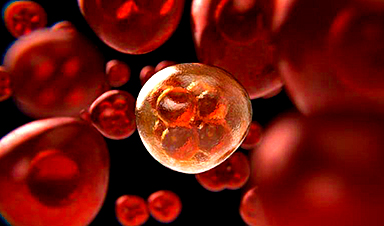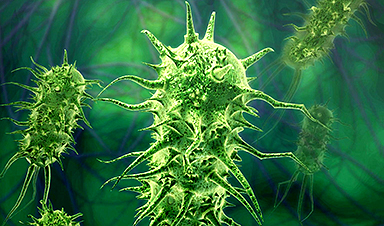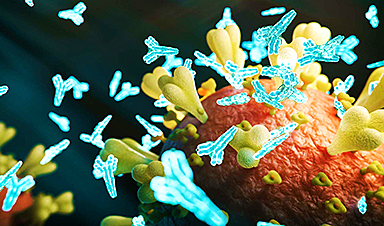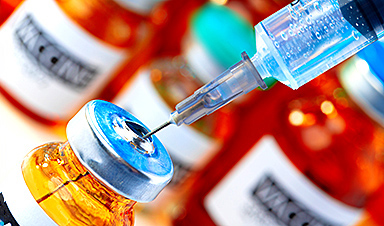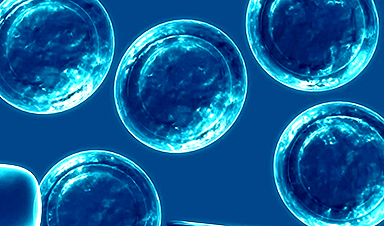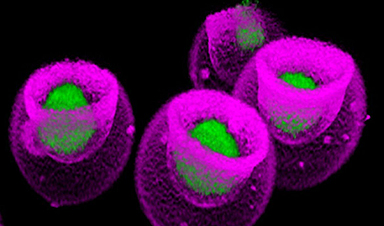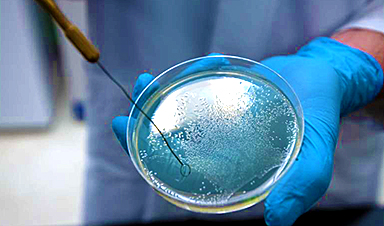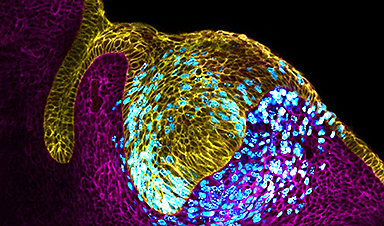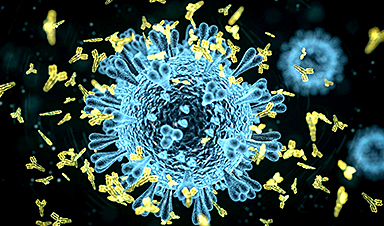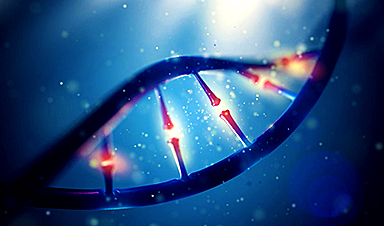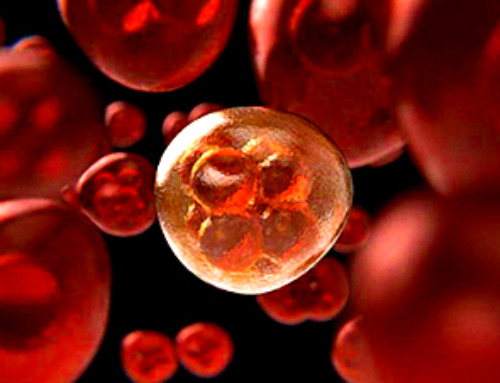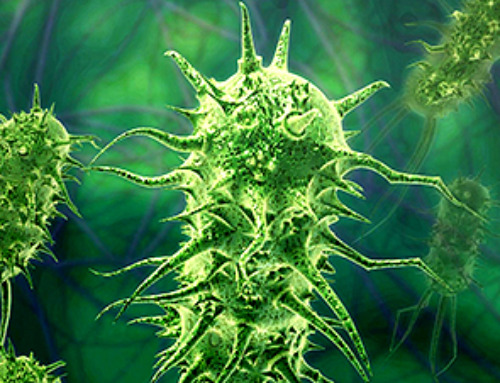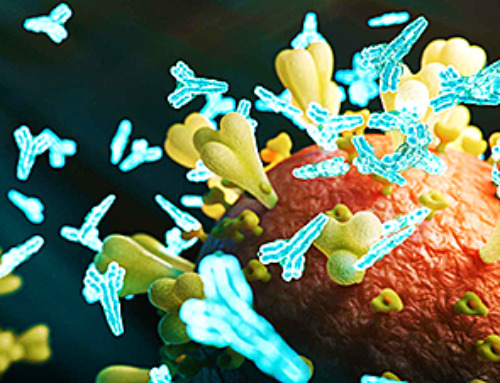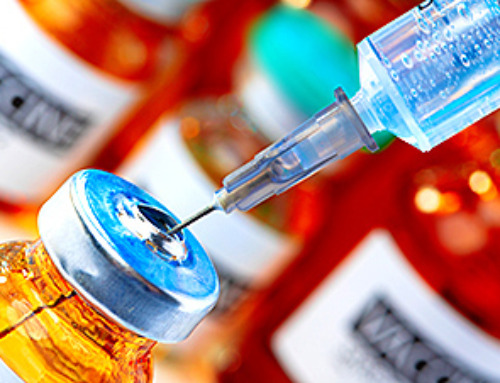How does the immune system fight pathogens?
The immune system has two distinct components: mucosal and circulatory.
The mucosal immune system provides protection at the mucosal surfaces of the body. These include the mouth, eyes, middle ear, the mammary and other glands, and the gastrointestinal, respiratory, and urogenital tracts. Antibodies and a variety of other anti-microbial proteins in the sticky secretions that cover these surfaces, as well as immune cells located in the lining of these surfaces, directly attack invading pathogens.
What are the key players in mucosal immunity?
The immune components people may be most familiar with are proteins known as antibodies, or immunoglobulins. The immune system generates antibodies in response to invading agents that the body identifies as “non-self,” such as viruses and bacteria.
Antibodies bind to specific antigens: the part or product of a pathogen that induces an immune response. Binding to antigens allows antibodies to either inactivate them, as they do with toxins and viruses, or kill bacteria with the help of additional immune proteins or cells.
The mucosal immune system generates a specialized form of antibody called secretory IgA, or SIgA. Because SIgA is located in mucosal secretions, such as saliva, tears, nasal and intestinal secretions, and breast milk, it is resistant to digestive enzymes that readily destroy other forms of antibodies. It is also superior to most other immunoglobulins at neutralizing viruses and toxins, and at preventing bacteria from attaching to and invading the cells lining the surfaces of organs.
There are also many other key players in the mucosal immune system, including different types of anti-microbial proteins that kill pathogens, as well as immune cells that generate antibody responses.
How does the COVID-19 virus enter the body?
Almost all infectious diseases in people and other animals are acquired through mucosal surfaces, such as by eating or drinking, breathing or sexual contact. Major exceptions include infections from wounds, or pathogens delivered by insect or tick bites.
The virus that causes COVID-19, SARS-CoV-2, enters the body via droplets or aerosols that get into your nose, mouth, or eyes. It can cause severe disease if it descends deep into the lungs and causes an overactive, inflammatory immune response.
This means that the virus’s first contact with the immune system is probably through the surfaces of the nose, mouth, and throat. This is supported by the presence of SIgA antibodies against SARS-CoV-2 in the secretions of infected people, including their saliva, nasal fluid, and tears. These locations, especially the tonsils, have specialized areas that specifically trigger mucosal immune responses.
Some research suggests that if these SIgA antibody responses form as a result of vaccination or prior infection, or occur quickly enough in response to a new infection, they could prevent serious disease by confining the virus to the upper respiratory tract until it is eliminated.
How do nasal vaccines work?
Vaccines can be given through mucosal routes via the mouth or nose. This induces an immune response through areas that stimulate the mucosal immune system, leading mucosal secretions to produce SIgA antibodies.
There are several existing mucosal vaccines, most of them taken by mouth. Currently, only one, the flu vaccine, is delivered nasally.
In the case of nasal vaccines, the viral antigens intended to stimulate the immune system would be taken up by immune cells within the lining of the nose or tonsils. While the exact mechanisms by which nasal vaccines work in people have not been thoroughly studied, researchers believe they work analogously to oral mucosal vaccines. Antigens in the vaccine induce B cells in mucosal sites to mature into plasma cells that secrete a form of IgA. That IgA is then transported into mucosal secretions throughout the body, where it becomes SIgA.
If the SIgA antibodies in the nose, mouth or throat target SARS-CoV-2, they could neutralize the virus before it can drop down into the lungs and establish an infection.
What advantage do mucosal vaccines have against COVID-19?
I believe that arguably the best way to protect an individual against COVID-19 is to block the virus at its point of entry, or at least to confine it to the upper respiratory tract, where it might inflict relatively little damage.
Breaking chains of viral transmission is crucial to controlling epidemics. Researchers know that COVID-19 spreads during normal breathing and speech, and is exacerbated by sneezing, coughing, shouting, singing and other forms of exertion. Because these emissions mostly originate from saliva and nasal secretions, where the predominant form of antibody present is SIgA, it stands to reason that secretions with a sufficiently high level of SIgA antibodies against the virus could neutralize and thereby diminish its transmissibility.
Existing vaccines, however, do not induce SIgA antibody responses. Injected vaccines primarily induce circulating IgG antibodies, which are effective in preventing serious disease in the lungs. Nasal vaccines specifically induce SIgA antibodies in nasal and salivary secretions, where the virus is initially acquired, and can more effectively prevent transmission.
Nasal vaccines may be a useful supplement to injected vaccines in hot spots of infection. Since they don’t require needles, they might also help overcome vaccine hesitancy due to fear of injections.
How close are researchers to creating a nasal COVID-19 vaccine?
There have been over 100 oral or nasal COVID-19 vaccines in development around the world.
Most of these have been or are currently being tested in animal models. Many have reported successfully inducing protective antibodies in the blood and secretions, and have prevented infection in these animals. However, few have been successfully tested in people. Many have been abandoned without fully reporting study details.
According to the World Health Organization, 14 nasal COVID-19 vaccines are in clinical trials as of late 2022. Reports from China and India indicate that nasal or inhaled vaccines have been approved in these countries. But little information is publicly available about the results of the studies supporting approval of these vaccines.
News
Scientists study lipids cell by cell, making new cancer research possible
Imagine being able to look inside a single cancer cell and see how it communicates with its neighbors. Scientists are celebrating a new technique that lets them study the fatty contents of cancer cells, [...]
Antibiotic Breakthrough: Revolutionary Chinese Study Paves Way for Superbug Defeating Drugs
New research reveals that fluorous lipopetides act as highly effective antibiotics. Bacterial infections resistant to multiple drugs, which no existing antibiotics can treat, represent a significant worldwide challenge. A research group from China has [...]
Signs of Multiple Sclerosis Show Up in Blood Years Before Symptoms Appear
UCSF scientists clear a potential path toward earlier treatment for a disease that affects nearly 1,000,000 people in the United States. By Levi Gadye In a discovery that could hasten treatment for patients with multiple [...]
Advanced RNA Sequencing Reveals the Drivers of New COVID Variants
A study reveals that a new sequencing technique, tARC-seq, can accurately track mutations in SARS-CoV-2, providing insights into the rapid evolution and variant development of the virus. The SARS-CoV-2 virus that causes COVID has the unsettling [...]
No More Endless Boosters? Scientists Develop One-for-All Virus Vaccine
End of the line for endless boosters? Researchers at UC Riverside have developed a new vaccine approach using RNA that is effective against any strain of a virus and can be used safely even by babies or the immunocompromised. Every [...]
How Are Hydrogels Shaping the Future of Biomedicine?
Hydrogels have gained widespread recognition and utilization in biomedical engineering, with their applications dating back to the 1960s when they were first used in contact lens production. Hydrogels are distinguished from other biomaterials in [...]
Nanovials method for immune cell screening uncovers receptors that target prostate cancer
A recent UCLA study demonstrates a new process for screening T cells, part of the body's natural defenses, for characteristics vital to the success of cell-based treatments. The method filters T cells based on [...]
New Research Reveals That Your Sense of Smell May Be Smarter Than You Think
A new study published in the Journal of Neuroscience indicates that the sense of smell is significantly influenced by cues from other senses, whereas the senses of sight and hearing are much less affected. A popular [...]
Deadly bacteria show thirst for human blood: the phenomenon of bacterial vampirism
Some of the world's deadliest bacteria seek out and feed on human blood, a newly-discovered phenomenon researchers are calling "bacterial vampirism." A team led by Washington State University researchers has found the bacteria are [...]
Organ Architects: The Remarkable Cells Shaping Our Development
Finding your way through the winding streets of certain cities can be a real challenge without a map. To orient ourselves, we rely on a variety of information, including digital maps on our phones, [...]
Novel hydrogel removes microplastics from water
Microplastics pose a great threat to human health. These tiny plastic debris can enter our bodies through the water we drink and increase the risk of illnesses. They are also an environmental hazard; found [...]
Researchers Discover New Origin of Deep Brain Waves
Understanding hippocampal activity could improve sleep and cognition therapies. Researchers from the University of California, Irvine’s biomedical engineering department have discovered a new origin for two essential brain waves—slow waves and sleep spindles—that are critical for [...]
The Lifelong Cost of Surviving COVID: Scientists Uncover Long-Term Effects
Many of the individuals released to long-term acute care facilities suffered from conditions that lasted for over a year. Researchers at UC San Francisco studied COVID-19 patients in the United States who survived some of the longest and [...]
Previously Unknown Rogue Immune Key to Chronic Viral Infections Discovered
Scientists discovered a previously unidentified rogue immune cell linked to poor antibody responses in chronic viral infections. Australian researchers have discovered a previously unknown rogue immune cell that can cause poor antibody responses in [...]
Nature’s Betrayal: Unmasking Lead Lurking in Herbal Medicine
A case of lead poisoning due to Ayurvedic medicine use demonstrates the importance of patient history in diagnosis and the need for public health collaboration to prevent similar risks. An article in CMAJ (Canadian Medical Association [...]
Frozen in Time: How a DNA Anomaly Misled Scientists for Centuries
An enormous meteor spelled doom for most dinosaurs 65 million years ago. But not all. In the aftermath of the extinction event, birds — technically dinosaurs themselves — flourished. Scientists have spent centuries trying [...]

